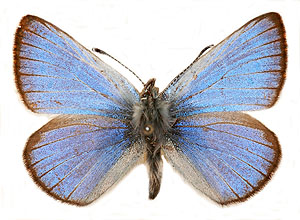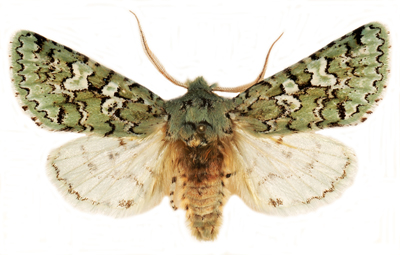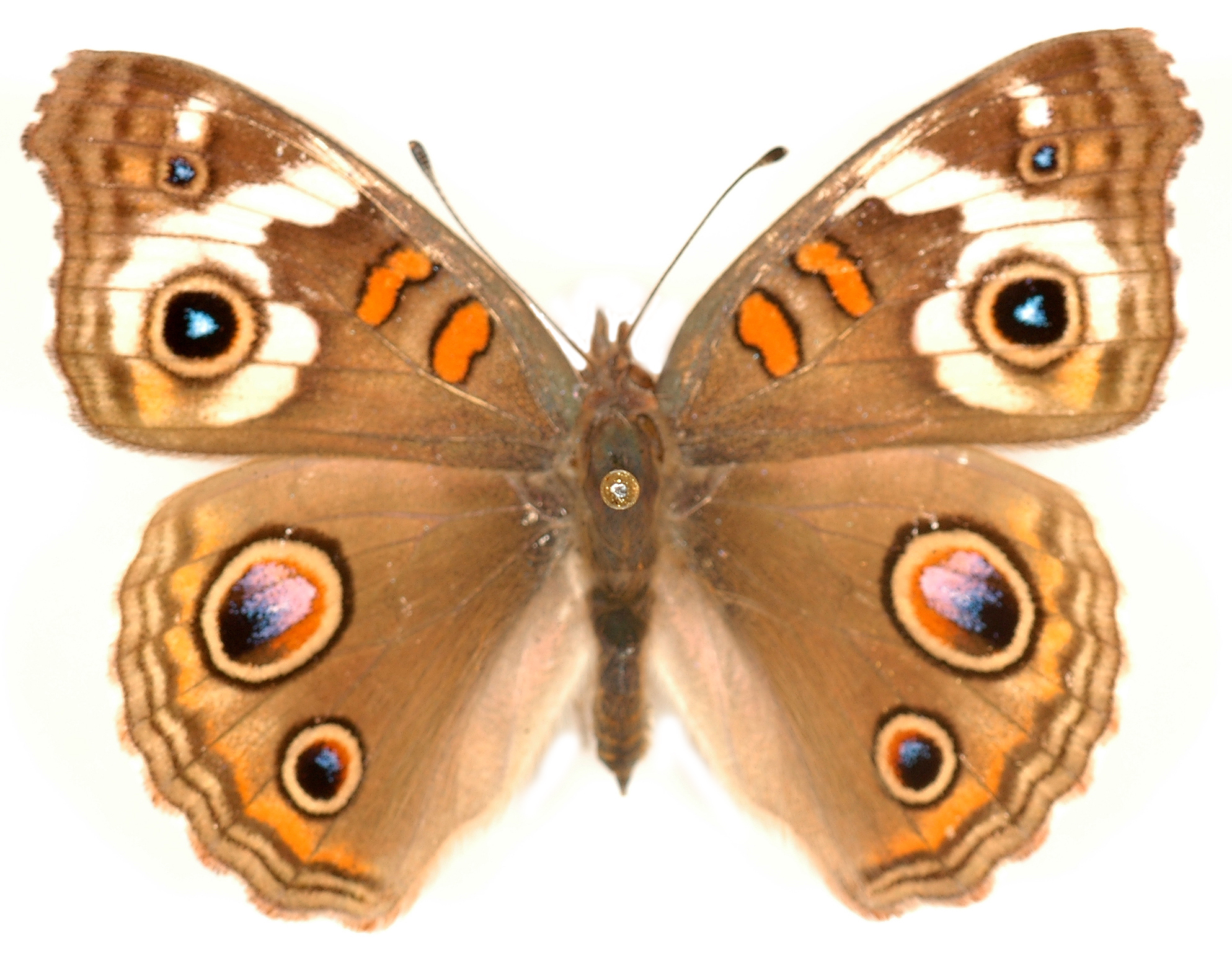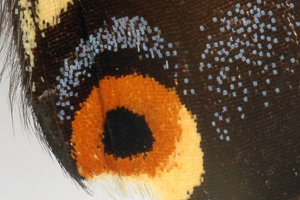 Have you ever touched the wings of a moth or butterfly and gotten some “powder” on your fingers? If you look through a microscope you will see that powder is actually tiny scales, like on a fish or lizard, or like the feathers of a bird. These scales give butterflies and moths their scientific name Lepidoptera (from the Greek Lepido = scale, and ptera = wing). Each scale can be a different color and when placed next to each other, the mosaic makes up the color patterns we see. Some are brightly colored to warn that this species does not taste good (aposematism), or look like distasteful species (Batesian mimicry), while others look like eye spots to startle predators (image to the left), and still others form a camouflage pattern to blend in with their background.
Have you ever touched the wings of a moth or butterfly and gotten some “powder” on your fingers? If you look through a microscope you will see that powder is actually tiny scales, like on a fish or lizard, or like the feathers of a bird. These scales give butterflies and moths their scientific name Lepidoptera (from the Greek Lepido = scale, and ptera = wing). Each scale can be a different color and when placed next to each other, the mosaic makes up the color patterns we see. Some are brightly colored to warn that this species does not taste good (aposematism), or look like distasteful species (Batesian mimicry), while others look like eye spots to startle predators (image to the left), and still others form a camouflage pattern to blend in with their background.
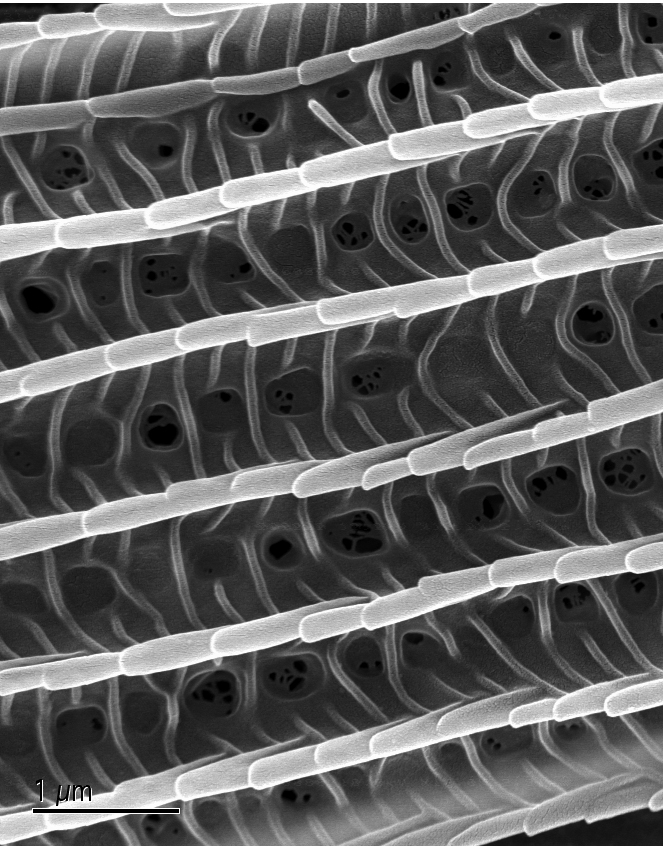 Most colors are caused by pigments that form inside the individual scales. These pigments absorb most frequencies of light, but reflect a particular frequency through holes on the scale surface (SEM image to the right). Other colors, especially blues, are structural and result from either thin-film refraction (like the rainbow of colors you might see on an oil slick or the underside of a DVD), or from constructive / destructive interference when light bounces off of ridged surfaces and breaks apart into different bands (like with a prism), but only some colors are allowed to escape while others are cancelled out by intereference. For more information on how blue (structural) colors are formed on butterflies watch the KQED Deep Look episode “What gives the morpho butterfly its magnificent blue?” featuring UC Berkeley research.
Most colors are caused by pigments that form inside the individual scales. These pigments absorb most frequencies of light, but reflect a particular frequency through holes on the scale surface (SEM image to the right). Other colors, especially blues, are structural and result from either thin-film refraction (like the rainbow of colors you might see on an oil slick or the underside of a DVD), or from constructive / destructive interference when light bounces off of ridged surfaces and breaks apart into different bands (like with a prism), but only some colors are allowed to escape while others are cancelled out by intereference. For more information on how blue (structural) colors are formed on butterflies watch the KQED Deep Look episode “What gives the morpho butterfly its magnificent blue?” featuring UC Berkeley research.
 Glasswing butterflies evolved wings without scales. But they have other tricks to keep them from being shiny and obvious to predators. For more on glasswing butteflies watch the KQED Deep Look episode “Glasswing butterflies want to make something perfectly clear“.
Glasswing butterflies evolved wings without scales. But they have other tricks to keep them from being shiny and obvious to predators. For more on glasswing butteflies watch the KQED Deep Look episode “Glasswing butterflies want to make something perfectly clear“.
